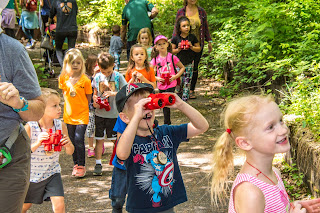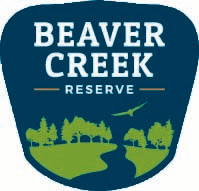Tuesday, June 30, 2020
Why We Don't Buy or Sell Monarchs
Tuesday, June 23, 2020
The Nature of Virtual Summer Camps
“Why isn’t Beaver Creek Reserve having summer camps this
year?”
We’ve been getting this question a lot, well before WEAU
aired an interview about local summer camps moving online. Believe us, we wanted our camps to be able to
run as usual. Connecting people with nature is much, much easier if you’re able to get said people out in nature.
So why couldn’t our camps be held in-person?
First, the Eau Claire Area School District is our major
partner in offering summer camps. We
have a contract with them in which they pay the costs for their students to
attend specific camps. These camps make
up most of our camp revenue in the summer.
With ECASD deciding that summer school and camps would be held in a
virtual format, it made sense to follow their lead and offer all our camps
virtually.
Second, we start planning for summer camps in the late
fall. That means that when camps were
canceled in May, we had to react rather quickly. At the time, we had to base our decision on
how to run camps, according to the prevailing COVID-19 restrictions, as well as
state and county orders. Even with the
loosened restrictions, running camps at our normal capacity would be extremely
challenging.
 |
| Nature Nuts campers, ages 5-6 on a bird-watching hike in 2019. |
Additionally, our Discovery Room is often used for camp
instruction and activity and as a back up for inclement weather. At present, The Scheels Discovery Room is still closed.
Bleach and other harsher chemicals that kill the coronavirus are not
safe for the animals, furs, taxidermy, or displays in the Nature Center. We would not have been able to use the room
for instruction or as a rain back up. Being inside presents its own challenges. At the time we had to make decisions for camps, we could not even count on inside areas
as an option for camp use. These are just the tip of the proverbial iceberg
when it came to logistical challenges that COVID-19 created in trying to
operate in-person summer camps.
Earlier we mentioned volunteers, people we rely heavily on at Beaver Creek Reserve. In the average
 |
| It takes a lot of volunteers to run each of our camps. |
At the time we were working on our new camps, quarantine
restrictions were already being lifted.
But this begged the question, what if a full quarantine was
re-established? There were just so many
unknowns. For all these reasons and more, we realized that the safest way to
hold our camps this year was online.
Despite the changes and challenges, we are really proud of the fun line-up of camp offerings for the summer. Several camps in partnership with the ECASD and those open to students of any district are now on our website and registration is open. We are finalizing a few more camps with fun themes including photography, owls, fireflies, butterflies, geocaching, and more! Camp fees for ECASD students are paid, but a materials fee still applies and is required. For non-ECASD sponsored camps, materials are included in the registration fee.
For the preschool and early childhood age, we suggest you
check out our partnered camps through Lily Pad Lab. They are holding a series of online “Tiny Scientist”
Camps.
Thank you for your understanding and support as we navigate
these unusual times. While our
naturalists are excited to see you across their screens, they are also counting
the days until they can see their campers in-person!
Friday, June 5, 2020
Wisconsin Has Lizards?!!
 |
| Northern Prairie Skink (image by A.B. Sheldon - WDNR) |
 |
| Photo from WDNR - By A.B. Sheldon |
 |
| Six-lined Racerunner hatchling (from WDNR by A.B. sheldon) |
 |
| Five-lined Skink (image from WDNR by A.B. Sheldon) |
 |
| Prairie Skink (image from WDNR by A.B. Sheldon) |
 |
| Six-lined Racerunner (from WDNR by Heather Kaarakka) |
 |
| Slender Glass Lizard (image from WDNR by A.B. Sheldon) |
 |
| Prairie Skink |
 |
| Slender Glass Lizard |
 |
| Six-lined Racerunner |
 |
| Five-lined Skink |


